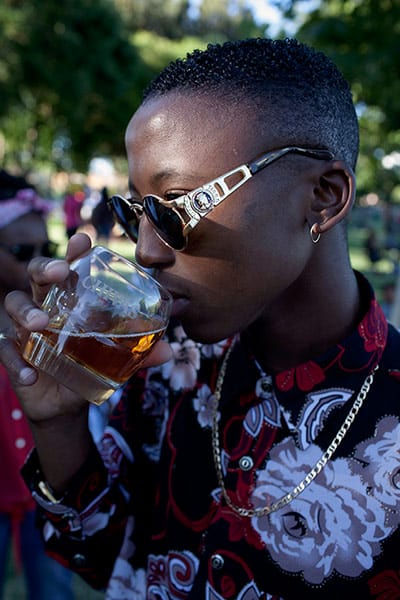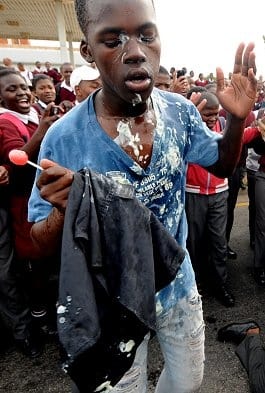
Enter Johannesburg’s townships and on the outskirts of this quickly gentrifying metropolis lies the heart of South African culture. Fifty-five percent of the countries’ population lives in these “suburbs” established to separate Black South Africans from White Afrikaaners during Apartheid. The average working-class family living in Soweto, Umlazi, or Mdantsane survives on just R3,000 per month ($290 USD) and are often dealing with crime, growing families, and insecurity as the South African economy stagnates.
SEE ALSO: Kenyan Man Emerges From Slums, Juggles Several Businesses While Attending University
There is an even larger theme taking root as South Africa’s Apartheid generation grows older: the “Free Blacks” are coming of age and developing a sub-culture all their own. “I love dressing up in expensive clothes…I can’t be caught wearing sneakers and jeans. That would be the joke of the year if I did that,” a young South African man named She-Ra says to the camera. Later, another boy taunts a group outside by pointing to his own flashy Versace-esque designer ensemble and saying, “This is expensive! I bought it! What do you have? Nothing!”
Welcome to the culture of Izikhothane.
Found mostly in the townships, Izikhothane are street crews who fight each other through outlandish displays of high-end fashion and dance battles. The idea is that these explicit shows of “wealth” and swag earns respect in the community by making others think the young men involved in the crews are well-off.
While the men battle and often DESTROY their pricey clothes in order to win the hearts of girls and even get a drink from the liquor store, their parents are less than impressed. Watching their children destroy all they’ve worked for — with the scourge of Apartheid fresh in their minds — puts parents between a rock and a hard place: While the waste and flagrancy is hard to stomach, it’s better than the OTHER gang alternatives that involve violence, theft, or worse.
Watch Izikhothane here:
As an American, Izikhothane is reminiscent of urban street culture in the United States minus the fancy footwork (although dance battles were quite popular with gangs during the early days of hip-hop). From New York to Miami to Chicago to Los Angeles, Black youth use extravagant fashion as a way to tell the world, and more importantly their peers, that they have money.
A walk through the schools in a low-income high school feels like a giant conundrum: Teenagers are punching free lunch cards (a government assistance program for families in need) while rocking the latest Jordans, True Religion Jeans, and G-Shock watches as their parents work double shifts to keep the lights on.
Although America is a bit further away from Jim Crow and segregation, the correlation between the struggles on the shoulders of parents is undeniable.
What mainstream media sees as the latest interesting sub-culture (Africa, after all, is the darling  of creatives these days) could easily be the evolution of a form of protest seen in Black communities around the world against a backdrop of poverty and limited opportunity.
of creatives these days) could easily be the evolution of a form of protest seen in Black communities around the world against a backdrop of poverty and limited opportunity.
The larger question that looms, however, is how can these youth — whether in South Africa or America — begin to define themselves and their “wealth” beyond the name of a fashion label?
Darfur Refugee Team Combats Destructiveness with Football, Needs Help Raising Money












